Announcer:
The following program is a PBS Wisconsin original production.
Frederica Freyberg:
I’m Frederica Freyberg. This week on “Here & Now,” one-on-one with Governor Tony Evers about extending the “safer at home” order. Assembly Majority Leader James Steineke weighs in on that. And Wisconsin’s new COVID-19 legislation. Plus, UW Health is on the front lines treating pandemic patients. And an in-depth interview with Wisconsin Supreme Court Justice-Elect Jill Karofsky. It’s “Here & Now” for April 17.
Announcer:
Funding for “Here & Now” is provided by the Focus Fund for Journalism and Friends of PBS Wisconsin.
Frederica Freyberg:
Governor Tony Evers this week extends the “safer at home” order until Tuesday, May 26, and also signed into law a bill that will allow the state to better respond to the COVID-19 pandemic. “Here & Now” Senior Political Reporter Zac Schultz explains how Republicans and Democrats came together to pass a bill with bipartisan support, even while saying the bill doesn’t do enough.
Man:
The clerk will open and call the roll.
Clerk:
Allen.
Allen:
Aye.
Zac Schultz:
The legislature’s passage of the COVID-19 Pandemic Response Bill was historic in many ways. First, the Assembly and Senate met virtually for the first time in state history.
Scott Fitzgerald:
These are extraordinary times and these decisions are gut-wrenching as we move through them.
Gordon Hintz:
The sooner we can manage the health crisis, the sooner we can address the economic crisis.
Zac Schultz:
Assembly Bill 1038 passed 97-2, with two Democrats from Milwaukee opposed. The Senate concurred 32-0, and Governor Evers signed the bill into law just a few hours later. The two biggest elements of the bill allow Wisconsin to capture more federal dollars. First, the state will receive additional federal Medicaid reimbursement dollars. Second, laid-off workers won’t have to wait a week to claim unemployment benefits, with the federal government picking up the cost. Wisconsin is already expecting to receive around $2.3 billion from the Federal CARES Act, most of which Governor Evers will be able to spend at his discretion. This bill allows the Republican-controlled Joint Finance Committee to transfer an additional $75 million between state agencies.
Scott Fitzgerald:
This bill isn’t perfect and it might be the first bill of a number that we are going to have to pass in the Legislature.
La Tonya Johnson:
I’m going to be forced to vote for it, and it’s going to pass, but there is far more, far more that needs to be done.
Woman:
Here.
Zac Schultz:
The Legislature is adjourned until next January, but Senate President Roger Roth ended the session by ordering the room should not be touched with the infrastructure kept in place in case the Senate has to come back in virtual session again. Reporting from Madison, I’m Zac Schultz for “Here & Now.”
Frederica Freyberg:
Governor Tony Evers this week extended his “safer at home” order until May 26. Even then, he says, reopening the state won’t be like flipping a switch. It would likely be gradual and depends on having enough testing, personal protective equipment and beefed up contact tracing. Governor Evers has agreed to join us each Friday. This afternoon, he joined us from the executive residence. Governor Evers, thank you so much for being with us.
Tony Evers:
You’re welcome, Frederica. Thanks so much.
Frederica Freyberg:
Well, I don’t have to tell you that your extension of the “safer at home” order is controversial. We have protests planned for around the capitol next week. We’ve got majority Republican legislators saying that they’re talking about filing a lawsuit. What is your reaction to the upset around this?
Tony Evers:
Well, my reaction is we need to continue to follow the science. I mean, we’ve always talked about the fact that we needed to reduce the number of cases that we have and it hasn’t happened. I mean, the first order, and people did follow it, safe at home. They’re doing it. We saved lives by doing it, but we still haven’t reached that point where we can say it’s headed in the opposite direction. So we — frankly, from a science point of view, we had no choice. And the second thing is — and I think some people forget about this, but when I talk about this, especially this order, this order is about making sure that we’re getting to a better place health-wise, but we’re also talking about how this gets us to the point where we can start to reopen parts of our economy. So it’s both these things happening at the same time. So people, politicians have to do what they have to do. I’m focused on making sure that we do the right thing health-wise for our state and the right thing for our economy.
Frederica Freyberg:
Now, you say that three things are needed to reopen the state: massive expansion of testing capacity, sufficient personal protective equipment for health care workers and greatly expanded contact tracing. Describe why having those things met will mean that it is safe then to go about our business.
Tony Evers:
Yeah. And I’ll just have to say those are the same things that we saw President Trump talk about in his comments and the CDC’s comments the other day. So these aren’t new things. But why they’re important is this. At some point in time, we will have a chance to rapidly reduce the number of people that are still positively impacted — or have a positive test. But what we have to do is be ready for those — until we have a vaccine, that virus is not going away. So we need to make sure that we have everything in place so that when we do find someone, we have the testing. We’ll do much more testing than we do now, then we can use those contact tracers to follow up with that person. Find out who they’ve been involved with and talking to and exposing, and get those people 14 days isolation so that we can start to do this in a way that’s important. Now, the equipment is the same thing. We need that for testing, people that do the tests. But we also need that supply of equipment for our business community, because when they reopen, their workplace is going to look a lot different than it does now and they’re going to need some of that equipment also.
Frederica Freyberg:
Back to testing. We continue to have a problem with having enough tests to get to this place where you and the health secretary-designee want us to be. Why do we have that problem with number of tests?
Tony Evers:
Well, we’re — there’s some communication issues here but we are ramping that up as we speak. We spent — we sent 2,000 tests today to Green Bay. We’re ramping it up on our Native American and Nations across the state also. So we’re getting in a good place. Certainly we had trouble getting the testing materials, but we have to use what we have wisely and so that’s what we’re doing right now. But at the end of the day, we and the other states that we’re working with absolutely need more testing materials. I think we have the testing labs in place. It’s the materials that are the problem.
Frederica Freyberg:
As you say, you have entered into a partnership with other Midwest governors on ways to reopen the economy. Why this regional approach?
Tony Evers:
Well, certainly it sends a message to people that we’re all about the same thing: having these contact tracers in place, making sure that we have enough equipment and testing materials. As a group, we represent millions of people and it’s a bipartisan thing and so having that unified voice. And then, frankly, the White House and the CDC followed in our footsteps or vice versa, but we’re all together on making sure that those issues are front and center. And I see that from business people, too, and business organizations, making the same kind of pre-conditions for getting where we need to be. So it’s important for us to speak in one voice and, frankly, I think it tells people that we’re serious about this and it’s a bipartisan thing and not just a bunch of Dems figuring this out.
Frederica Freyberg:
All right. Governor Tony Evers, again, we greatly appreciate you joining us, joining us each Friday here on “Here & Now.” Thanks very much.
Tony Evers:
Thank you very much. I appreciate it.
Frederica Freyberg:
Some people are unhappy with long-term “stay at home” orders, especially because of the impact on closed businesses and job loss. This week, we checked in with Wisconsin Assembly Majority Leader Jim Steineke for his take. Representative Steineke, thanks very much for joining us.
Jim Steineke:
Absolutely. Good to be here.
Frederica Freyberg:
So what is your reaction to the extension of the “safer at home” order?
Jim Steineke:
Disappointed and, frankly, confused, because we’ve seen other states that are preparing to relax some of these regulations come May first, including some of our surrounding states. And then you look at New York, who did an extension of their “safer at home” restrictions, but they only went to May 15. Governor Evers deciding on May 26, we just don’t understand where he got that date from and what he’s using as his basis to make that decision, because it seems to fly in the face of what other states are doing, including other states like Michigan and New York that have much more serious problems than what we do.
Frederica Freyberg:
So what would you like to see happen?
Jim Steineke:
I’d like to see a much more measured approach. He has the authority under the emergency declaration until May 12. I would have preferred to see the extension go, you know, to May 12, if that. You know, going forward, obviously, we have to look at the data and make sure we’re making decisions that are in the best interest of the health of our citizens. But I don’t think there’s any reason, given the fact that, like in the Fox Valley, there’s seven cases, seven people hospitalized with this virus in 13 hospitals. So other areas of the state outside of Milwaukee and maybe Madison aren’t seeing as big of an issue and to relax regulations in those places seems to make a little bit more sense.
Frederica Freyberg:
You and the majority, I understand, are going to pursue legal and legislative options. On what basis?
Jim Steineke:
Well, again, the emergency declaration is good for 60 days. That goes until May 12. What the governor is using as his basis to extend this is authority that they say that the secretary of the DHS has to extend this indefinitely. I don’t know how, if the statutes give the Legislature the ability to end an emergency declaration or, in the absence of ending it, not extending it, how an appointee of the governor then can just unilaterally extend it for as long as she wants. That flies in the face, I think, of what the law says as far as the Legislature’s capability.
Frederica Freyberg:
Have you yet filed or formulated your remedies?
Jim Steineke:
No, we haven’t. We’re still working through that. I’m still hopeful that the governor will actually come to us with a plan. I think the thing that Wisconsinites are really frustrated by is that the governor has never aligned — laid out the criteria that he’s using to make these decisions. So when he says we need more PPE, well, what does that look like? What number do we have to hit? How many weeks of PPE do we need? He says, we need more testing. Okay. What does that look like? How many tests do we have to be able to do per day or per week to hit that benchmark? He’s kind of patting everybody on the head saying, “Hey, you’re doing a great job. Just keep going for another month.” While we have businesses throughout the state that are failing now. Many more that are going to be failing over the next week or two. And this is a serious problem that we have to try to address and have to give some people some idea of when this is going to end.
Frederica Freyberg:
What about the models from the Department of Health Services that say without the “safer at home” order, somewhere between 300 and 1400 lives would already have been lost to coronavirus?
Jim Steineke:
Well, I think the models have been consistently off. So I think that’s a big part of the problem. And I get it. You know, modeling something like this, a virus that we’ve never seen before, is very difficult, very difficult to understand the impacts. I mean we saw nationally the model said even with restrictions, we were going to see hundreds of thousands of people die. We now know that that’s not likely to be the case. So we have to make decisions based on the data from the medical professionals, but we also have to make sure in areas where this isn’t as big of an issue that we can start to relax the regulations here pretty soon so businesses can survive and people can get back to work.
Frederica Freyberg:
How do you, though, how do you possibly reconcile lost businesses and jobs with loss of life?
Jim Steineke:
It’s a great question. And that’s something that we obviously struggle with. But this was always about bending the curve, right? Slowing the spread. It was never about getting down to zero. The medical professionals aren’t saying that we’re somehow going to stay safer at home until we’re down to zero infections. That’s never been the case. This is about making sure that the hospitals are prepared and have adequate resources to help deal with the patients that are coming in. And as we see across the state, hospitals by and large are empty. They are hemorrhaging tens and hundreds of millions of dollars right now because they have now cancelled all elective procedures waiting for this influx of patients that hasn’t come in the vast majority of the state.
Frederica Freyberg:
Representative Jim Steineke, we need to leave it there. Thanks very much.
Jim Steineke:
Thank you.
Frederica Freyberg:
For many, Memorial Day weekend is the beginning of summer and a trip to the cabin or second home. Even prior to the “safer at home” extension, the COVID-19 outbreak had tourist destinations like Bayfield, Oneida, Door and Vilas Counties urging people to stay home. This week, Trevor Keller shows us how an influx of people could have a big impact on health care in those areas.
Trevor Keller:
Beautiful scenery in its isolated setting make Door County an enticing getaway from the COVID-19 pandemic. But local officials are urging people to avoid the peninsula.
Dave Lienau:
I never thought in my wildest dreams I would ever ask people not to come to Door County. It’s very concerning to us to have to ask people not to come. It’s just not in our nature to do that.
Trevor Keller:
The county is asking people who own seasonal homes to stay away. The worry is an older population and limited health care staff. Door County Medical Center is the county’s only hospital. They’ve tripled their intensive care capacity, but that’s 12 to 15 ICU beds for a county of 27,000 people.
James Heise:
Typically if we have a critically-ill patient that is beyond what we would be able to handle from a specialty perspective, it would be that person would be transferred to Green Bay. We may not have that luxury.
Trevor Keller:
Officials are trying to protect residents while limiting damage to fast-approaching tourism season. The White Gull Inn is closed. They’re already getting summer cancellations and sending out refunds.
Meredith Coulson-Kanter:
We’re actively giving — sending money out the door every day and not bringing any in, which is definitely unusual for this time of year.
Trevor Keller:
Al Johnson’s Swedish Restaurant is famous for its goats on the roof, but right now, they’re more concerned about customers through the door.
Lars Johnson:
Those months are what carry us the entire year. So we’re all in the situation right now. We’re kind of in a holding pattern.
Trevor Keller:
Anxiety is high, but business owners we talked to all agreed visitors should stay home. They just hope a rocky spring can still turn into a more typical Door County summer.
Meredith Coulson-Kanter:
It’s a toss-up between yes, being anxious to open our doors as soon as we possibly can, but definitely not wanting to so if it’s going to put us or our staff or our visitors at risk.
Trevor Keller:
For “Here & Now,” I’m Trevor Keller.
Frederica Freyberg:
This week some positive news in the fight against COVID-19. The University of Wisconsin has joined a nationwide effort to help people hospitalized with coronavirus. As “Here & Now” Reporter Marisa Wojcik shows you, they are taking plasma from a Madison patient who has recovered to benefit people still seriously ill with the disease.
Gary Dalgaard:
I started hearing little bits about it. Things they were doing in other parts of the country and I thought that would really be cool if we could turn this into a positive and be able to do something.
Marisa Wojcik:
Gary and Gretchen Dalgaard were some of the first few cases of the novel coronavirus in Wisconsin. Gary discovered that having recovered from the COVID-19 disease, the plasma in his blood contained something special.
William Hartman:
The donor, the individual that you take it from, that person has already fought off the virus, so they have an effective antibody in their system.
Marisa Wojcik:
Dr. William Hartman is the lead investigator of the UW Health’s program to bring the plasma of recovered COVID-19 patients to those who are currently suffering from the disease.
William Hartman:
So this is a technique that actually dates back over 100 years. It was used to treat diphtheria, Spanish flu. It’s been used in other coronaviruses, like MERS and SARS.
Marisa Wojcik:
Gary donated his plasma last week. And it’s already in the bodies of two patients suffering from COVID-19.
William Hartman:
What we’re doing is giving the patient an immune boost.
Marisa Wojcik:
Studying the effects of his immune boost within others will help the medical world understand the potential of this treatment.
William Hartman:
Can we prevent patients from going on to ventilators? Can we prevent patients from going into the ICU?
Marisa Wojcik:
The Convalescent Plasma Project has grown to 800 hospitals nationwide.
William Hartman:
This, because it’s a meaningful study, I think really will allow us to come to a conclusion as to whether or not it’s effective and safe and then we can spread worldwide to treat as many people as we can.
Marisa Wojcik:
Hundreds more have called, asking if they qualify to donate plasma.
William Hartman:
The fact that the community has been so tremendous and forthcoming with their donations means that we should have plasma available to any patient that needs it.
Gretchen Dalgaard:
There is so little that we regular people can do.
Gary Dalgaard:
We’ve been sitting here in the house for five weeks and watching all the heroic things that others are doing out there and feeling just totally helpless. And this was a chance for us to do something.
Marisa Wojcik:
For “Here & Now,” I’m Marisa Wojcik.
Frederica Freyberg:
The results of the controversial spring election in Wisconsin grabbed headlines this week. Most notably, an upset win in the Wisconsin Supreme Court race. Daniel Kelly became only the third incumbent justice to lose his seat on the court since 1967 and there could be repercussions for the November elections. Dane County Judge Jill Karofsky rode a wave of democratic support to win a ten-year term, cutting the conservative majority in the top court. It now stands at 4-3. Justice-Elect Jill Karofsky joined us from her home in Madison. And Justice-Elect, thanks very much for being here.
Jill Karofsky:
Thank you so much for having me. It’s really wonderful to be with you.
Frederica Freyberg:
And I suppose we should say congratulations.
Jill Karofsky:
Thank you. I’m very, very humbled, and I’m honored that I’m going to be the next justice on the Wisconsin State Supreme Court.
Frederica Freyberg:
Now, on election return day, you declared victory long before the Associated Press called the election for you. What were the early indicators that you had won?
Jill Karofsky:
We knew that we were holding our own as far as the margins in the WOW counties of Waukesha, Ozaukee and Washington. We knew that we were winning in Winnebago. That we were winning in Brown, and that we’re winning in Outagamie, which I guess now are called the BOW Counties. So we were doing — holding our margins in the WOW counties, and we were doing well in the BOW counties. We also knew that the votes in Milwaukee, in the County of Milwaukee and the city of Milwaukee and Dane County, and particularly Madison, had not come in yet. And then we were also starting to see really strong returns from southwestern Wisconsin, especially in places like La Crosse.
Frederica Freyberg:
Do you feel as though your victory over the incumbent, who was endorsed by Donald Trump, is a bellwether for liberals in November?
Jill Karofsky:
I think our election is an indicator that people in the state of Wisconsin heard the message of our campaign and that they want State Supreme Court justices who are committed to following the rule of law. I don’t know what’s going to happen in November or beyond, but I know that in this election that despite efforts to suppress the vote, people voted and they came out strong. We won by over 10 points. The message was loud and it was clear that people wanted a change on the court.
Frederica Freyberg:
Now, as you’ve just said, people came out to vote in places like Milwaukee, even in the face of COVID-19. What is your kind of lingering response to that?
Jill Karofsky:
First of all, we never should have had an election on April 7th. People never should have been put in the position where they had to choose between their own health and safety and voicing their vote, having their voice heard in this election. But people were willing to do that. People braved COVID-19. They wore masks and they wore gloves and they went to the polling places. And looking at those pictures made me cry. Thinking about those pictures right now makes me feel very, very emotional for what those people did. It is clear that what people want on this is — in this state is a court that is not partisan, but a court that has justices on it who are committed to following the law.
Frederica Freyberg:
In the midst of this pandemic, would you support moving to mail-in voting in lieu of in-person going forward?
Jill Karofsky:
I think, and I’ve said this in the campaign, that we need to do whatever we can to try to make it easier for people to participate in elections and not more difficult for people to participate in elections. And, like I said, we shouldn’t have had an election on April 7th. We should have had an election where people could exercise their right to vote in a way that would be safe for them and safe for members of their family, and we didn’t have that.
Frederica Freyberg:
How do you expect to grow collegiality on the court, especially given animosity born of this past election?
Jill Karofsky:
I don’t think it’s going to be a problem. Several of the justices have already reached out to me. I think, like I have said before, there are going to be areas where we agree. There are going to be areas where we disagree. But I’m looking forward to the social distancing being over so I can sit down with each of my colleagues over a cup of coffee or a good Wisconsin beer and we can put our differences aside so we can do the work that the people of Wisconsin elected us to do.
Frederica Freyberg:
This question on your campaign, the Democratic Party gave you $1.3 million. Do you believe you would have to recuse in any case that came before the court involving the party?
Jill Karofsky:
I have said, and I will keep this promise that if the Democratic Party of Wisconsin is a litigant, is a party in a case that comes to the Wisconsin State Supreme Court, I will not sit on that case.
Frederica Freyberg:
Even with your election to the Supreme Court, conservatives still hold a majority. What does a more even split mean, if anything, for decisions to come?
Jill Karofsky:
I think that the court, with the way that it’s structured now, with the justices on it, I think that there are going to be lots of opportunities for us to have some incredibly meaningful and important conversations about what the law says, what the law means, and what our opinions ought to say. And I am really looking forward to having those discussions and to being part of those opinions from the court.
Frederica Freyberg:
All right. Well, Justice-Elect Jill Karofsky, thanks very much for joining us.
Jill Karofsky:
Thank you so much. I really appreciate it. Stay well.
Frederica Freyberg:
That’s our program for this week. Be sure to join us online throughout the week for updates on the COVID-19 pandemic at PBSWisconsin.org, then click on the news tab. Also for ongoing in-depth coverage on the coronavirus response in Wisconsin, visit our partner news site at WisContext.org. This week, a look at changing guidelines for face masks. That’s WisContext.org. Thank you for watching “Here & Now.” Stay well, Wisconsin, and we will see you next week. I’m Frederica Freyberg. Have a great weekend.
Announcer:
Funding for “Here & Now” is provided by the Focus Fund for Journalism and Friends of PBS Wisconsin.
Search Episodes
Related Stories from PBS Wisconsin's Blog

Donate to sign up. Activate and sign in to Passport. It's that easy to help PBS Wisconsin serve your community through media that educates, inspires, and entertains.
Make your membership gift today
Only for new users: Activate Passport using your code or email address
Already a member?
Look up my account
Need some help? Go to FAQ or visit PBS Passport Help
Need help accessing PBS Wisconsin anywhere?

Online Access | Platform & Device Access | Cable or Satellite Access | Over-The-Air Access
Visit Access Guide
Need help accessing PBS Wisconsin anywhere?

Visit Our
Live TV Access Guide
Online AccessPlatform & Device Access
Cable or Satellite Access
Over-The-Air Access
Visit Access Guide
 Passport
Passport







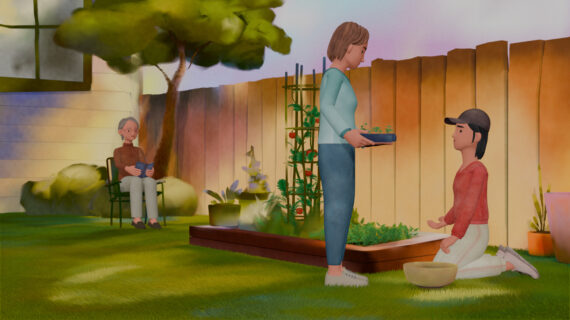
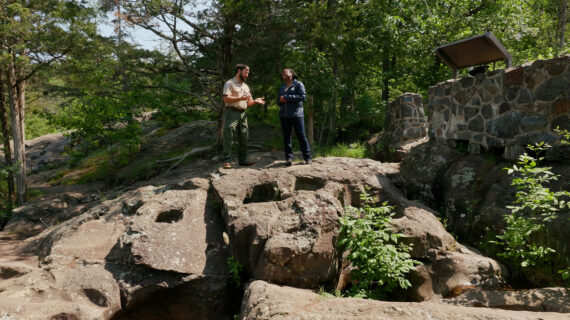
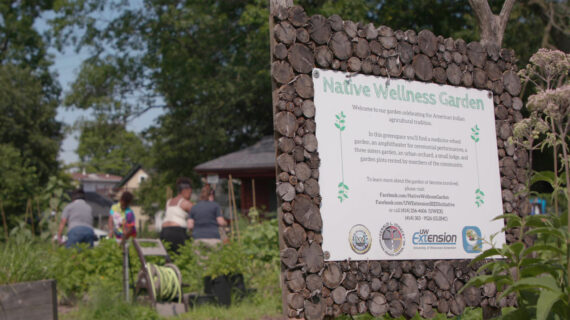


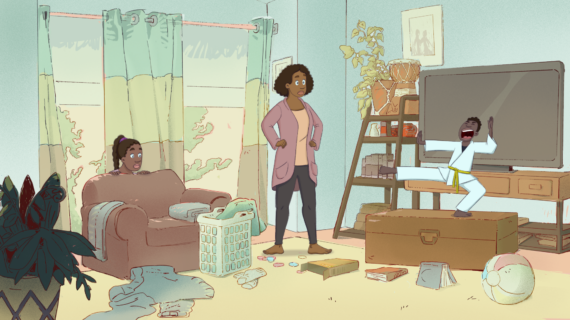
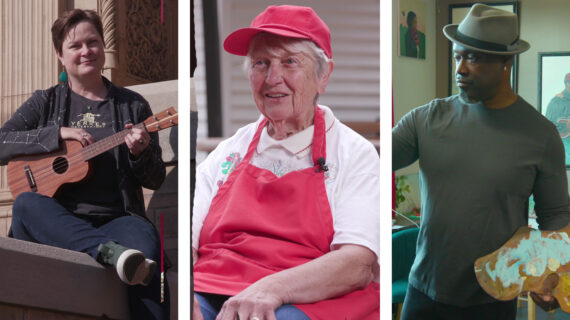
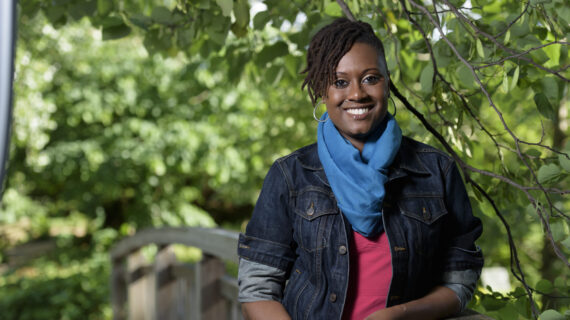
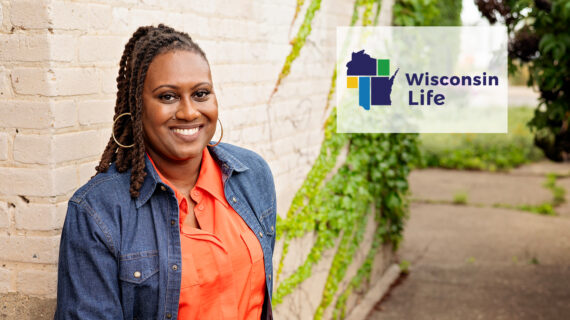


Follow Us